Carlos Mendez-Dorantes, PhD
@carlosmendezphd.bsky.social
Reposted by Carlos Mendez-Dorantes, PhD
Check out Dr. Mendez-Dorantes' recent preprint for more details on his exciting research! www.biorxiv.org/content/10.1... 42/
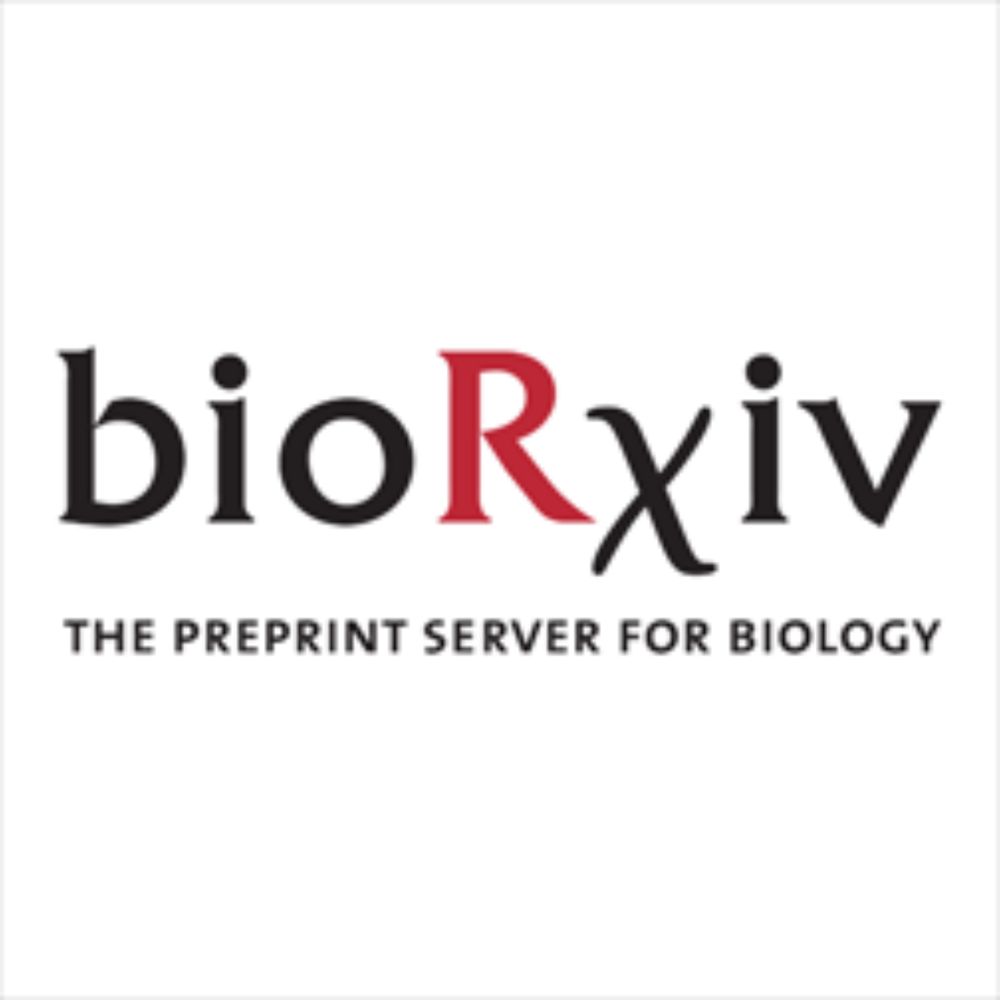
Chromosomal rearrangements and instability caused by the LINE-1 retrotransposon
LINE-1 (L1) retrotransposition is widespread in many cancers, especially those with a high burden of chromosomal rearrangements. However, whether and to what degree L1 activity directly impacts genome...
www.biorxiv.org
May 9, 2025 at 2:41 PM
Check out Dr. Mendez-Dorantes' recent preprint for more details on his exciting research! www.biorxiv.org/content/10.1... 42/
Reposted by Carlos Mendez-Dorantes, PhD
Dr. Carlos Mendez-Dorantes @carlosmendezphd.bsky.social from Dr. Kathleen Burns' lab @danafarber.bsky.social is telling us about the LINE-1 retrotransposon and its causal role in genome instability and chromosomal rearrangements in a wide variety of cancers. 41/
May 9, 2025 at 2:41 PM
Dr. Carlos Mendez-Dorantes @carlosmendezphd.bsky.social from Dr. Kathleen Burns' lab @danafarber.bsky.social is telling us about the LINE-1 retrotransposon and its causal role in genome instability and chromosomal rearrangements in a wide variety of cancers. 41/
Also, check out a pre-print from the lab of Jose Tubio: they analyzed cancer genomes with a high burden of somatic L1 insertions using long-read WGS. They also uncovered that synchronous L1 lesions contribute to chromosomal rearrangements.
www.biorxiv.org/content/10.1...
www.biorxiv.org/content/10.1...

Synchronous L1 retrotransposition events promote chromosomal crossover early in human tumorigenesis
L1 retrotransposition is a significant source of genomic variation in human epithelial tumours, which can contribute to tumorigenesis. However, fundamental questions about the causes and consequences ...
www.biorxiv.org
December 19, 2024 at 9:55 PM
Also, check out a pre-print from the lab of Jose Tubio: they analyzed cancer genomes with a high burden of somatic L1 insertions using long-read WGS. They also uncovered that synchronous L1 lesions contribute to chromosomal rearrangements.
www.biorxiv.org/content/10.1...
www.biorxiv.org/content/10.1...
Huge thanks to our funding sources, including to
@jcchildsfund.bsky.social for supporting my postdoctoral work.
@jcchildsfund.bsky.social for supporting my postdoctoral work.
December 19, 2024 at 9:54 PM
Huge thanks to our funding sources, including to
@jcchildsfund.bsky.social for supporting my postdoctoral work.
@jcchildsfund.bsky.social for supporting my postdoctoral work.
Shout out to my fellow co-first authors Xi Zeng and Jennifer Karlow and co-authors Phil, Serafina and Jupiter, our genomics experts and collaborators Eunjung A Lee and Cheng-Zhong Zhang and my fantastic mentor Kathleen Burns.
December 19, 2024 at 9:53 PM
Shout out to my fellow co-first authors Xi Zeng and Jennifer Karlow and co-authors Phil, Serafina and Jupiter, our genomics experts and collaborators Eunjung A Lee and Cheng-Zhong Zhang and my fantastic mentor Kathleen Burns.
Check out our manuscript for many more examples, our insertional mutagenesis analysis, and our evidence showing L1 can cause foldback rearrangements and contribute to chromothriptic chromosomes.
www.biorxiv.org/content/10.1...
www.biorxiv.org/content/10.1...

Chromosomal rearrangements and instability caused by the LINE-1 retrotransposon
www.biorxiv.org
December 19, 2024 at 9:52 PM
Check out our manuscript for many more examples, our insertional mutagenesis analysis, and our evidence showing L1 can cause foldback rearrangements and contribute to chromothriptic chromosomes.
www.biorxiv.org/content/10.1...
www.biorxiv.org/content/10.1...
We also find L1-mediated DSBs can generate diverse types of large-scale intrachromosomal rearrangements, including deletions and duplications. Interestingly, we find L1 caused a pericentric ring chromosome!

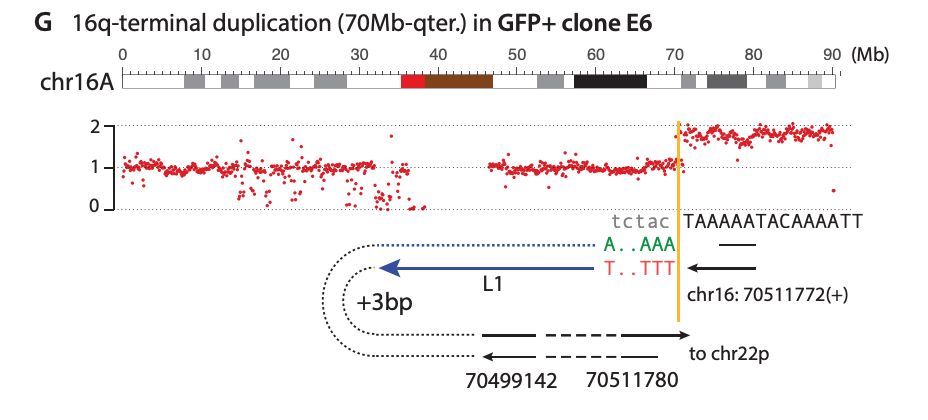


December 19, 2024 at 9:52 PM
We also find L1-mediated DSBs can generate diverse types of large-scale intrachromosomal rearrangements, including deletions and duplications. Interestingly, we find L1 caused a pericentric ring chromosome!
Similar to balanced translocations, we find that end joining between distal L1-mediated DSBs can generate dicentric or acentric chromosomes that result in complex rearrangements via breakage-fusion-bridge cycles or DNA fragmentation (chromothripsis).
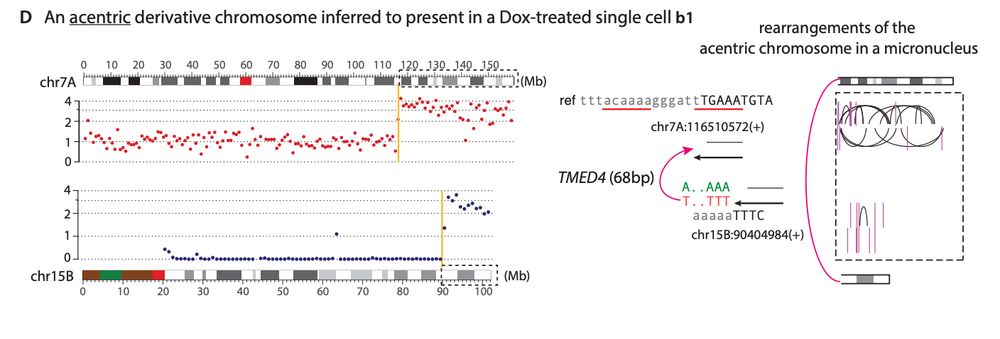

December 19, 2024 at 9:51 PM
Similar to balanced translocations, we find that end joining between distal L1-mediated DSBs can generate dicentric or acentric chromosomes that result in complex rearrangements via breakage-fusion-bridge cycles or DNA fragmentation (chromothripsis).
The latter suggest that contribution of L1 retrotransposition to chromosomal rearrangements based on canonical L1 genomic footprints may be underestimated in our current cancer genome analyses.
December 19, 2024 at 9:51 PM
The latter suggest that contribution of L1 retrotransposition to chromosomal rearrangements based on canonical L1 genomic footprints may be underestimated in our current cancer genome analyses.
For example, we show that L1-mediated DSBs from two distinct chromosomes can generate reciprocal balanced translocations (DNA copy number neutral), with one of the translocation junctions showing clear L1 TPRT evidence and the other lacking obvious evidence of L1 TPRT.

December 19, 2024 at 9:50 PM
For example, we show that L1-mediated DSBs from two distinct chromosomes can generate reciprocal balanced translocations (DNA copy number neutral), with one of the translocation junctions showing clear L1 TPRT evidence and the other lacking obvious evidence of L1 TPRT.
Here, we highlight the recombinogenic potential of DNA break ends of L1-mediated DSBs, with the DNA ends extended by TPRT leading to rearrangement junctions with L1 insertions and the reciprocal DNA ends leading to rearrangement junctions without evidence of L1 TPRT.
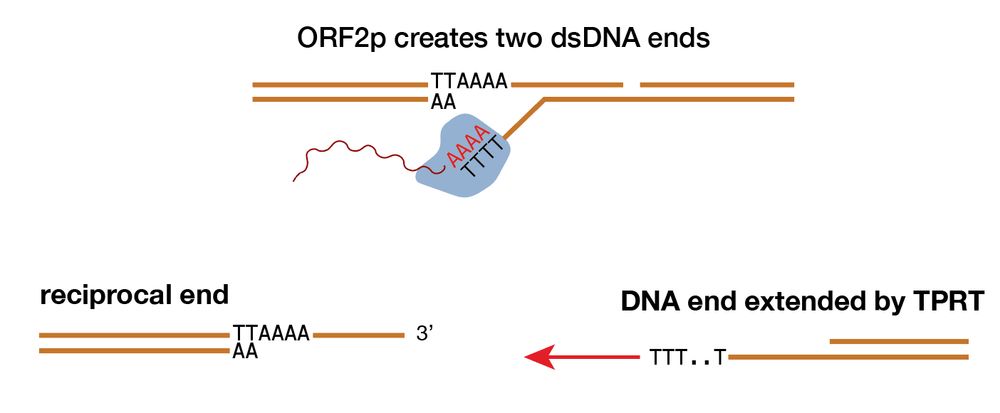
December 19, 2024 at 9:50 PM
Here, we highlight the recombinogenic potential of DNA break ends of L1-mediated DSBs, with the DNA ends extended by TPRT leading to rearrangement junctions with L1 insertions and the reciprocal DNA ends leading to rearrangement junctions without evidence of L1 TPRT.
Mechanistically, we found these alterations arise from DNA double-strand breaks (DSBs) generated by L1 encoded endonuclease and reverse transcriptase ORF2p, suggesting chromosomal breakage is a step in retrotransposition, or a commonly occurring risk of retrotransposition.
December 19, 2024 at 9:49 PM
Mechanistically, we found these alterations arise from DNA double-strand breaks (DSBs) generated by L1 encoded endonuclease and reverse transcriptase ORF2p, suggesting chromosomal breakage is a step in retrotransposition, or a commonly occurring risk of retrotransposition.
After expression of L1 in nearly diploid cells, we found L1 causes both local and long-range chromosomal rearrangements, small and large segmental copy-number alterations, and subclonal copy-number heterogeneity due to ongoing chromosomal instability.
December 19, 2024 at 9:49 PM
After expression of L1 in nearly diploid cells, we found L1 causes both local and long-range chromosomal rearrangements, small and large segmental copy-number alterations, and subclonal copy-number heterogeneity due to ongoing chromosomal instability.
L1 retrotransposition occurs via target-primed reverse transcription (TPRT): L1 ORF2p nicks genomic DNA (3′-AA/TTTT-5′) to form a primer-template structure and then reverse transcribes the RNA to create L1 cDNA that is converted to double-stranded DNA as an insertion

December 19, 2024 at 9:48 PM
L1 retrotransposition occurs via target-primed reverse transcription (TPRT): L1 ORF2p nicks genomic DNA (3′-AA/TTTT-5′) to form a primer-template structure and then reverse transcribes the RNA to create L1 cDNA that is converted to double-stranded DNA as an insertion
L1 is the only active protein-coding transposon in humans: ORF1p (RNA binding protein) and ORF2p (endonuclease/reverse transcriptase).
My mentor Dr. Burns established L1 is derepressed in cancers, showing ORF1p detection in malignant tissues and somatic L1 copies in cancer genomes
My mentor Dr. Burns established L1 is derepressed in cancers, showing ORF1p detection in malignant tissues and somatic L1 copies in cancer genomes

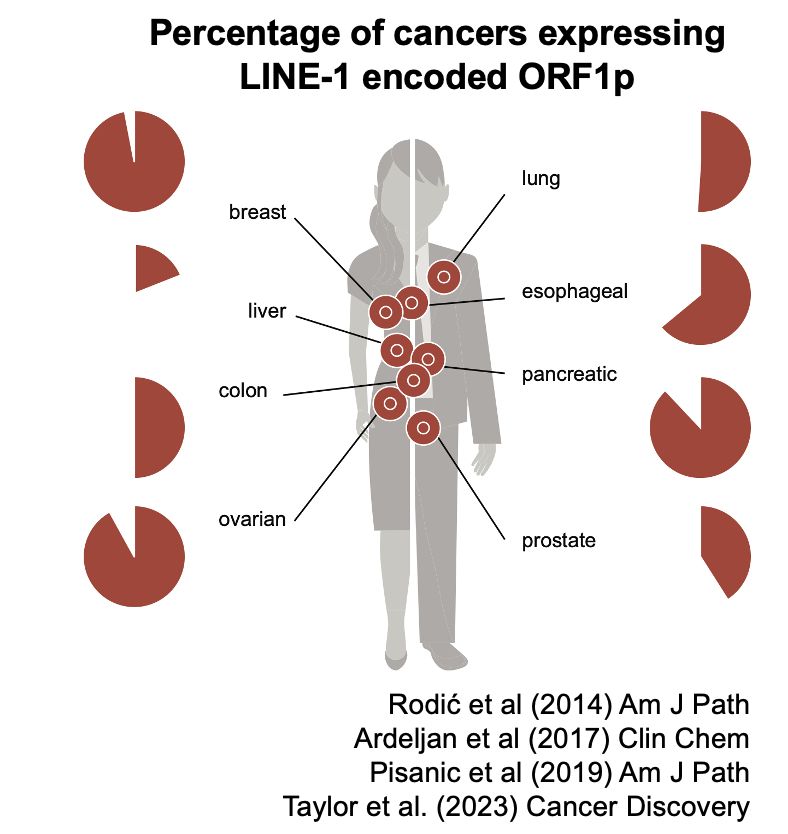
December 19, 2024 at 9:48 PM
L1 is the only active protein-coding transposon in humans: ORF1p (RNA binding protein) and ORF2p (endonuclease/reverse transcriptase).
My mentor Dr. Burns established L1 is derepressed in cancers, showing ORF1p detection in malignant tissues and somatic L1 copies in cancer genomes
My mentor Dr. Burns established L1 is derepressed in cancers, showing ORF1p detection in malignant tissues and somatic L1 copies in cancer genomes

